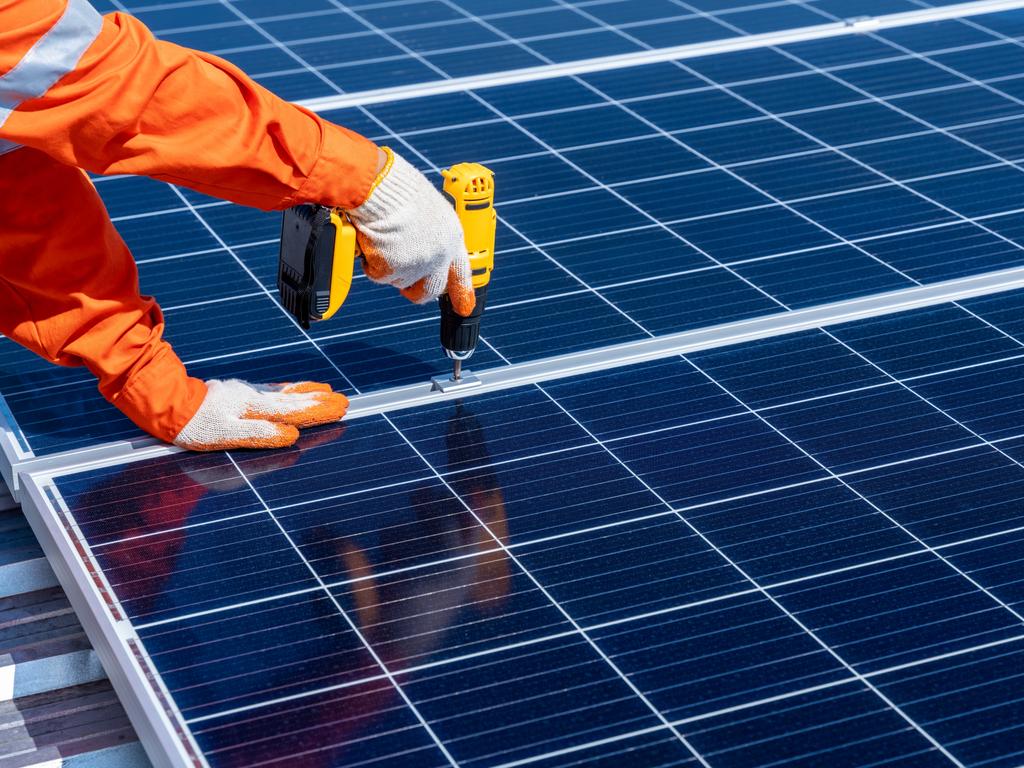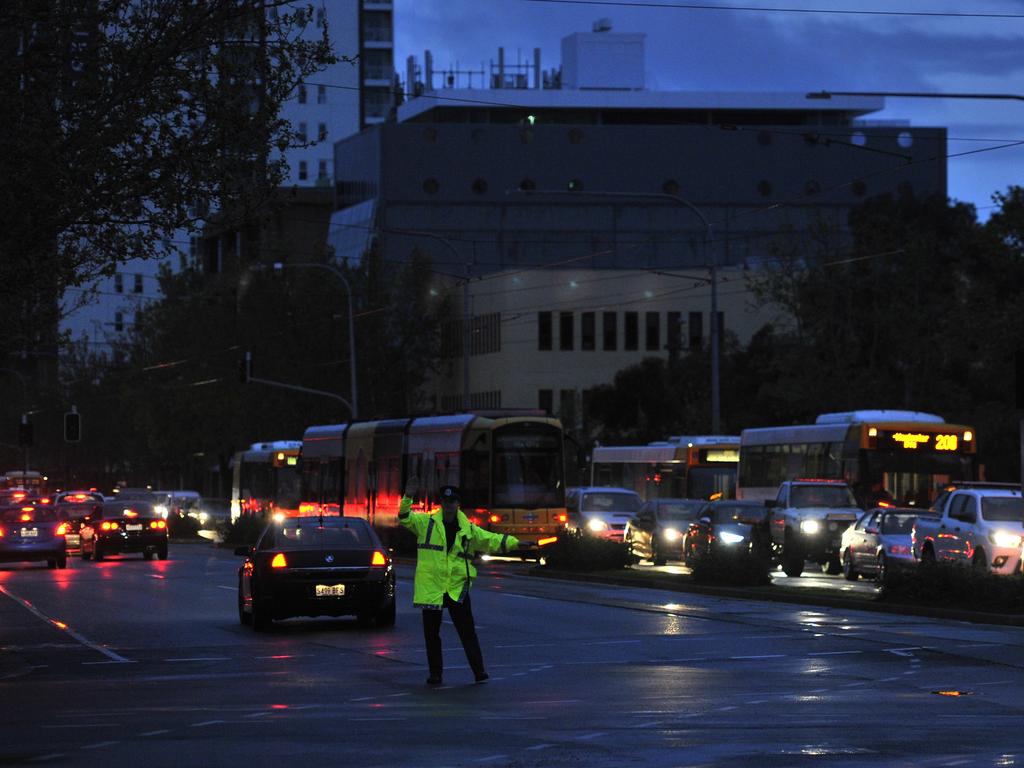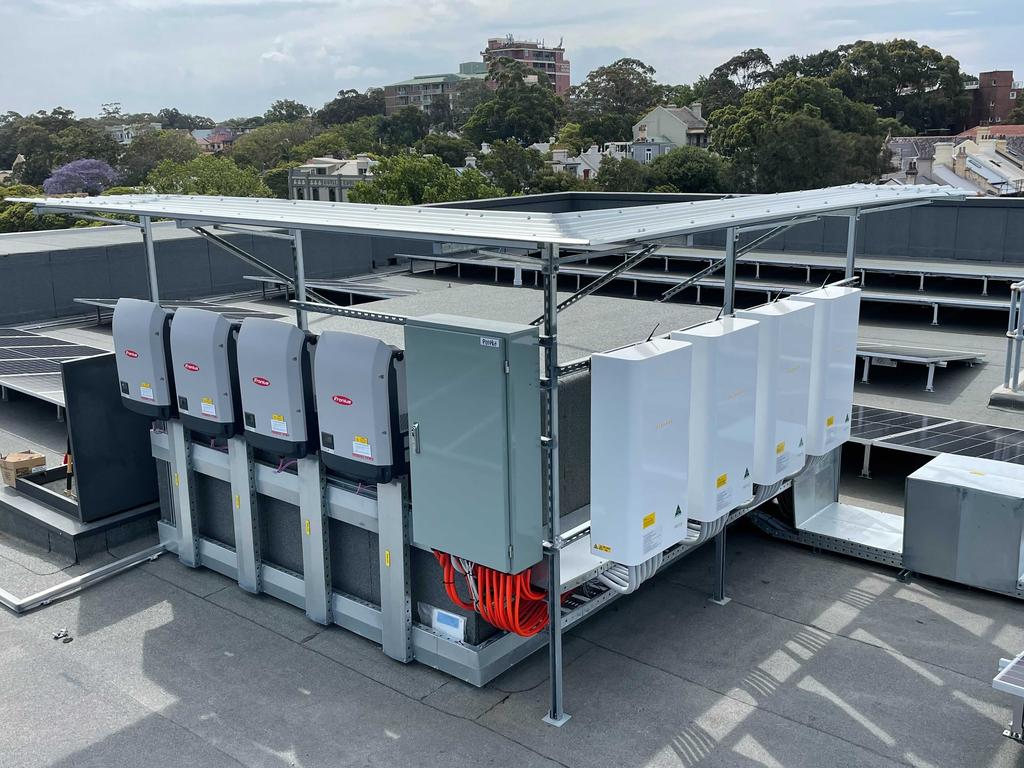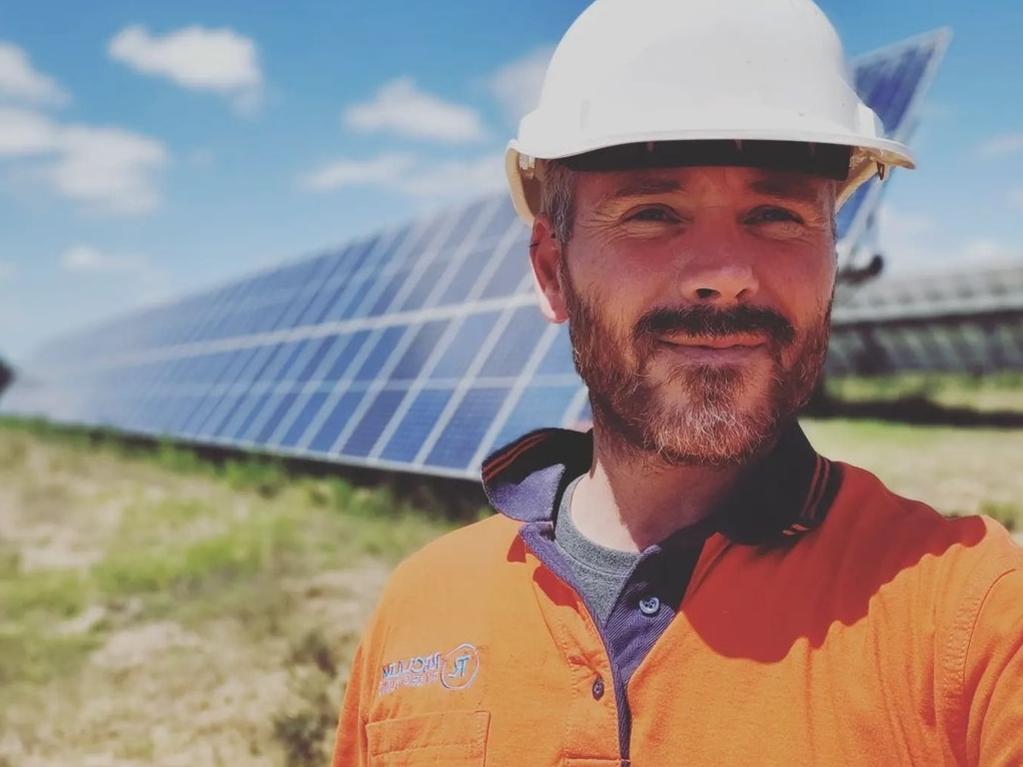Australian solar panel wait lists blowout as new rules to stop dodgy solar installers emerge
More Aussies are getting solar panels to slash their power bills, but the industry faces many issues from unqualified contractors to changing rebates and growing wait lists.
Soaring home power costs are prompting more and more Aussies to consider home solar, turbocharging our already world-leading demand, but new buyers are waiting up to ten months for installation.
According to the Clean Energy Council, an astonishing 25 per cent of Australian houses sport the big glass oblongs on the roof: the highest on a per capita basis anywhere in the world. In Queensland and South Australia the proportion is more than 40 per cent.
“2021 was another record year for clean energy in Australia,” Clean Energy Council Chief Executive Kane Thornton said.
“The rooftop solar sector had its fifth-straight record-breaking year, installing almost 400,000 new systems, to add 3.3 gigawatts of new capacity.”
Tindo Solar CEO Shayne Jaenisch said enquiries about rooftop solar were up 60 per cent last month, but wait times could vary dramatically depending on the unit needed.
“Because we’re a manufacturer we’ve always got stock; I carry about 15,000 modules in my warehouse,” Mr Jaenisch said.
“But with the silicon chip shortage at the moment there’s a massive delay with a lot of different types of inverters [the little component that converts DC energy created by the sunlight hitting the panel into the AC electricity you need in your house].
“If we have the inverters in stock I can take a deposit today and have it installed in five days. Having said that, I sold systems in September I still can’t install because I’m waiting for key components.”
Tindo is Australia’s only locally-based manufacturer of photovoltaic [PV] solar panels, but as with most suppliers the world over, they rely on China for many materials.
The International Energy Association raised concerns about China’s dominance of PV supply chains in a report this month, saying Beijing already controlled more than 80 per cent of it, and that share was actually set to increase unless other nations developed their own manufacturing capacity.
Professor Renate Egan from the Australian Centre for Advanced Photovoltaics at the University of NSW said it was an “internationally recognised challenge”.
“We’re not the only place in the world thinking about this. Europe has big activity around local manufacturing, so does the US, so I actually think we’ll wind up with a robust international supply chain, drawing from wherever is the most cost effective place to supply the material, and where makes the right sense in terms of logistics,” Prof Egan said.
She said she thought Australia was best placed to develop capacity in the silicon refining part of the PV manufacturing process.
“Ideally we would do the silicon refining and ship it offshore; someone else would do the wafering and cell processing and then we would take it back and do module processing,” she said.

The IEA report on PV supply chains didn’t even mention one of the key concerns with China’s dominance of the industry. According to research by Sheffield Hallam University in the UK, Beijing has long relied on forced labour from Uyghur Muslims in Xinjiang province for the construction of its solar panels.
But it’s definitely an issue customers raise, Mr Jaenisch said.
“About two years ago we joined the UN global compact as a signatory to try and abolish slavery from the PV supply chain. We’ve got a number of big corporates that buy directly from us because of our stand against forced labour,” he said.
But a Biden administration decision to ban the import of Chinese solar panels had infuriated Beijing, Mr Jaenisch said, to the point where they “closed down any communications for the PV chain throughout China. So there is zero transparency.”
Mr Jaenisch said his goal is to increase the level of component manufacturing done in Australia, but ultimately “it’s going to take massive investment (and) massive support from government”.
Clamping down on dodgy operators
New rules governing the solar PV sector became effective in April this year after a 2020 federal government review found examples of dodgy practices throughout the industry, including high-pressure sales tactics and installations being carried out without electricians on-site.
Of installations assessed by the government review, in more than one in three cases (37 per cent), small-scale technology certificates were being signed off by the installers when they were likely not on-site, contrary to guidelines.
Concern about industry malpractice has also prompted action at the state level, with the Andrews government in Victoria announcing in March it would boost the number of solar safety inspectors and boost training in the sector.

In 2020, a blitz of solar installation sites by NSW Fair Trading resulted in 20 on-the-spot fines and seven offences recorded for a range of issues.
As a result of the new federal government rules, accredited solar panel workers must be on-site at least three times during the installation process – and they must be prepared to show proof to authorities in the form of selfies that are both date-stamped and geo-tagged.
Retailers are also now bound by a suite of new requirements. They must confirm to the customer in writing the name of the installer, and full information about the unit purchased, including grid export limits and the expected payback period.
The Clean Energy Council recommends avoiding people trying to sell solar through doorknocking, cold calling and those who insist you sign up on the spot.


While the CEC runs an Approved Solar Retailer program, it stresses any companies claiming to sell PV units on their behalf are telling fibs.
“Approved Solar Retailers have committed to responsible sales and marketing activities, and industry best practice,” the CEC advises. “They will also provide a five-year, whole-of-system warranty and will ensure a Clean Energy Council accredited installer sets up your solar system.”
‘If you’re going to generate it, you’ve got to use it’
The days of rooftop solar diehards crowing about the money they actually make from sending power back to the grid are coming to an end, industry experts say.
These “feed in” tariff arrangements – which were as generous as 44 cents per kilowatt hour in Queensland at one stage – have decreased over time, and more changes are on the way.
Australia’s electricity system was designed for the one-way flow of power – from the source to the home – but our enthusiastic uptake of rooftop solar has at times led to grid instability issues when there was too much “two way” traffic. Last year the Australian Energy Market Commission finalised new rules which will oblige power companies to support the two-way flow of power, but also charge rooftop solar owners if they try to export too much to the grid.
“(The changes have) finally woken a lot of people up that bigger is not better with solar,” said Tindo Solar CEO Shayne Jaenisch. “If you’re going to generate it, you’ve got to use it, you can’t afford to send it back to the grid.”
The impending AEMC changes do not seem to have slowed demand. Solahart General Manager Stephen Cranch said enquiries were up 47 per cent in the second quarter of 2022, year on year.
“The idea that homeowners could be charged for exporting solar back to the grid has
undoubtedly caused concern and confusion. However, when customers understand that the
potential cost of feed-in tariff reforms is the equivalent of just two coffees per month (or less),
most are keen to proceed with their solar journey,” Mr Cranch said.
Advocacy group Solar Citizens initially opposed the export charges, which they described as a “sun tax”.
While still querying the necessity for the AEMC changes, Solar Citizens spokeswoman Stephanie Gray said they “didn’t overly amount to a whole lot”.


Various caveats have been built into the rules. The energy companies will have to offer a basic free service for rooftop solar owners to export their surplus, and existing owners will not face any changes to their arrangements until July 2025.
Industry sources said when introduced, the rules could mean some rooftop solar owners could be slugged $100 per year to export their excess power to the grid, which could spur more homeowners to invest in batteries so they can store more energy, and hence not have to export it.
“We don’t think (the changes are) ideal, but so far the proposals put forward seem pretty reasonable,” Ms Gray said. There would still be a need to keep an eye on the power companies to ensure they were being fair to consumers, she added.
Announcing the changes last year, AEMC Chair Anna Collyer said the changes would “turn the current one-way street delivering power to people’s homes into two-way super-highway where energy flows in both directions”.
The changes would ultimately allow more solar to get onto the grid, the AEMC stated.
Batteries to beat the blackouts
Australia’s solar boom is expected to beget another, for home batteries.
But it hasn’t happened just yet.
There are an estimated 140,000 battery systems installed in Australian homes, and according to solar analytic firm SunWiz, some 33,000 such units went in last year.
A survey conducted by the group Energy Consumers Australia (ECA) last month found one in three households (33 per cent) think they will buy a battery at some point in the future, 30 per cent doubt they will, and 34 per cent are unsure.
Cost is the main barrier, with 32 per cent of survey respondents saying the models available in Australia are too expensive (the smallest units will still set you back about $5000). Forty-one per cent of people surveyed said the government should offer subsidies for home battery systems. State governments in NSW, Victoria and South Australia already offer rebates.
“The price of batteries hasn’t come down as much as was expected a few years ago,” said Solar Citizens spokeswoman Stephanie Gray, “So if you’re talking about a payback period for batteries, depending on your usage, it could be up to 10 or 15 years, and the warranty might only be for that same amount of time.”
Solahart general manager Stephen Cranch said more and more customers were looking at home batteries, but he warned prices were likely to increase in the short to medium term.
“It will be a while before costs come down due to the high price of lithium and other
technologies that support the production of batteries,” he said. “My advice for Aussie households is to invest in solar as soon as possible to protect against rising electricity costs and ensure the system capacity is large enough to allow for future energy needs. A battery could be added upfront or at a later stage depending on the household budget.”

Ms Gray said many home battery buyers were motivated by the idea of “beating blackouts” and being independent from the grid. Tindo Solar CEO Shayne Jaenisch said the infamous blackout that affected large areas of South Australia in September 2016 prompted a big shift in customer motivation.
“It’s about ‘I want to keep my own power, I’m scared of blackouts, I’m scared of the grids going down,’” he said. “Being left without power has created that fear.”
While batteries store and extend the solar power you collect from your roof, they all have their limits.
“A good battery on average holds 10 kilowatt hours of power, to 13 kilowatts for a Tesla,” Mr Jaenisch said. “Most of the batteries will hold back 20 per cent of their power in cases of blackout. If a standard house uses about 25kw hour per day, (the batteries are) generally enough to see them through their night-time loads, unless they’re using heavy airconditioning or pumps or anything like that.”
Solar and strata: making it happen
Aussie homes lead the world in solar panels, but what about the 2.5 million of us who live in flats?
Few unit blocks in Australian cities currently carry solar; there is little incentive for landlords to add a feature that drives down power bills for tenants, and in strata apartments it can be consigned to the “too hard” basket.

But one Aussie company, Allume Energy, has pioneered a solution. Its SolShare hardware connects multiple apartments to a single rooftop solar system, sharing the electricity generated at a time and quantity that maximises savings for all. Individual apartments typically save $350-$400 annually, the company claims.
But incentives would help drive uptake, said Jennifer Curtis, Head of Growth at Allume Energy.
“While there are examples of solar incentives supporting apartment block residents currently, including local council programs and the Solar Homes scheme in Victoria, there isn’t consistency across councils and states. In order to drive real change and change at a pace that can make a timely impact for apartment residents and Australia’s clean energy goals, this needs to change,” she said.
Surveys by Energy Consumers Australia have found strong support for the idea that landlords should be incentivised to add solar panels to their properties.
When the panels come off
Big global demand for solar power around a decade ago meant some Chinese companies sourced cheaper components, with the result that some of those panels were failing early, warned Clive Fleming, Director of Reclaim PV Recycling.
While most solar units are covered by a 25-year warranty, a small percentage – just over 2 per cent – failed at the five-year mark because of “varying manufacturing standards,” he said.

But other panels were coming off roofs even though they were still functioning, Mr Fleming said. A recent bulk pick-up in Rockhampton found 31 per cent of discarded PVS were actually still usable.
Reclaim PV has sites in Adelaide and Brisbane, and are set for a busy future with the panels of many early solar adopters coming to the end of their life within the next decade.
Working PV units are on-sold or donated, while the malfunctioning ones are separated, with glues removed in a furnace, and a chemical process used to extract the silver, lead, copper and silicon.
“All those different components go out separately to different tech partners, and they all stay in Australia,” Mr Fleming said.
Victoria introduced a ban on solar panels going to landfill in 2019, although other states are yet to follow.
Originally published as Australian solar panel wait lists blowout as new rules to stop dodgy solar installers emerge







